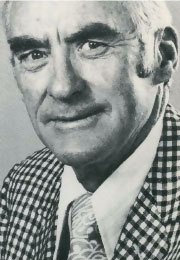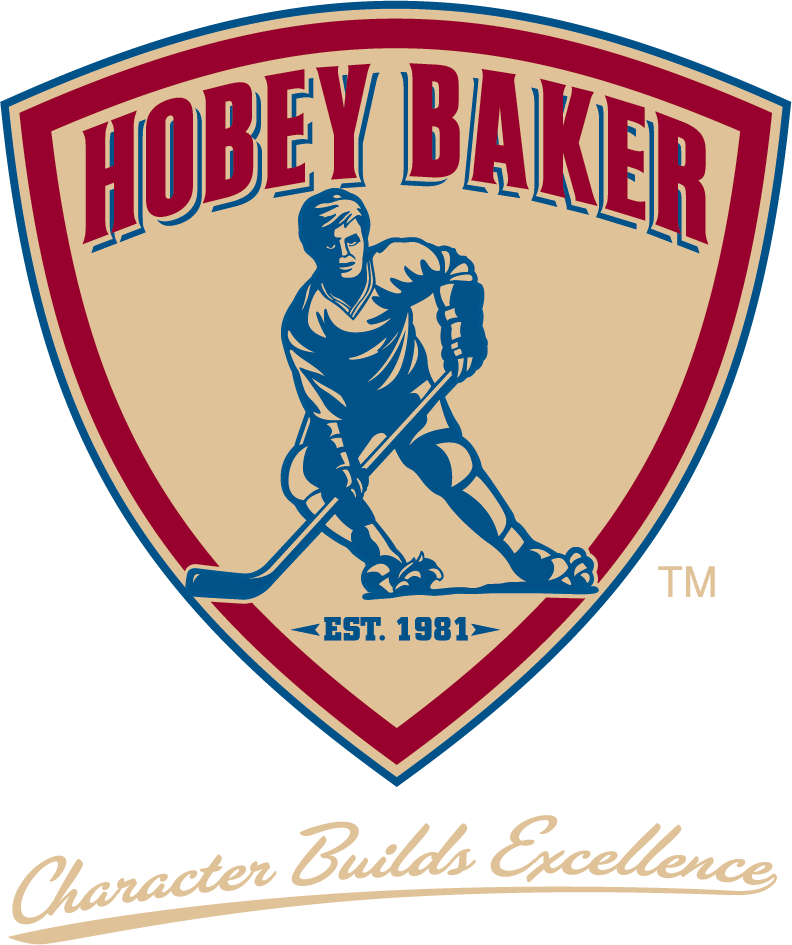Murray Armstrong – 1984 Legend of College Hockey

BY MARSHALL JOHNSTON
Murray Armstrong’s rise to prominence in the hockey coaching ranks began long before his move to the University of Denver, where he achieved national recognition for developing the Pioneers into a national powerhouse for two decades.
After a brief amateur career, Armstrong turned professional in 1935, with the New York Rangers, and spent one season with their affiliate team in the Eastern League, the New York Rovers. The next year he was drafted by the Toronto Maple Leafs and spent most of the next three years playing in Syracuse. It was during this tenure that Armstrong was to meet his future bride, Freda, fondly know as “Sis.” Armstrong was traded to the New York Americans in 1939 where he enjoyed his most successful year as a professional player, finishing eighth in scoring in the National Hockey League during the 1939-40 season.
Following a stint in the Canadian Army, Armstrong’s professional career resumed with the Detroit Red Wings from 1944 through 1947. During the next season Armstrong made his first coaching move, working as a player-coach with the Dallas Texans of the United States Hockey League. It was obvious this native of Semans, Saskatchewan had a unique coaching skill as he guided the then last place Texans to the top of the league and a first place finish.
For the next eight years, Armstrong concentrated solely on coaching. He guided the Regina Pats of the Western Canada Junior Hockey League where he achieved an impressive .637 winning percentage including four championships. It was during this time that Armstrong made his first contact with United States colleges, sending several of his players to universities via athletic scholarships.
In 1956, the amiable Armstrong, with Sis and son Rob, decided to move to the United States. The place was Denver, Colorado, and purpose was to develop a collegiate hockey program for the University of Denver, a small independent university that had salvaged an old Navy airplane hangar in 1947 and turned it into a hockey rink.
In his first season, Armstrong struggled to a 13-14-1 record, but recruiting and teaching were Armstrong’s strengths and he produced an NCAA championship in 1957-58, in only his second year at Denver. During his 21 year career at the University of Denver, Armstrong’s teams achieved five national titles, seven outright titles in the Western Collegiate Hockey Association and a total of 465 wins.
The 1960-61 Pioneers, called by many the greatest collegiate team ever, and led by the late Bill Masterton, battled their way to a 30-1-1 mark, scoring 7.6 goals per game while holding opponents to less than 2.0 scores per contest. The only loss came in Houghton, Michigan, at the hands of the Huskies of Michigan Tech. That year the Pioneers won their third NCAA title, defeating Minnesota 6-1 and St. Lawrence 12-2 in the final tournament.
Armstrong’s collegiate coaching success was not limited to championships and on-ice results. Many of his players went on to achieve professional hockey careers themselves. Armstrong was equally proud of his commitment to higher education. Perhaps it was because he himself did not have the opportunity; in any case, he challenged his athletes so that they graduated at a nearly 90% clip, including 22% who went on to take post-graduate work. Armstrong referred to this “academic excellence” as an integral part of his coaching success. He felt strongly that when a boy achieved some “multidimensional” success he was more capable of realizing his fullest potential as an athlete. Armstrong mirrored a similar strategy in his own career which included considerable business accomplishments along with his demonstrated coaching abilities.
Some of Armstrong’s previous recognitions include: Colorado Sports Hall of Fame, 1974; Citizen by Choice Award for Colorado, 1975; Lester Patrick Trophy, National Hockey League, 1977; Saskatchewan Hall of Fame, 1981; and several “Coach of the Year” awards.
Always a dedicated family man, Armstrong and Sis now live in Florida where they both enjoy golf, swimming and other outdoor activities. Their son, Rob, now lives in New York and is a national news broadcaster for one of the major radio networks.
